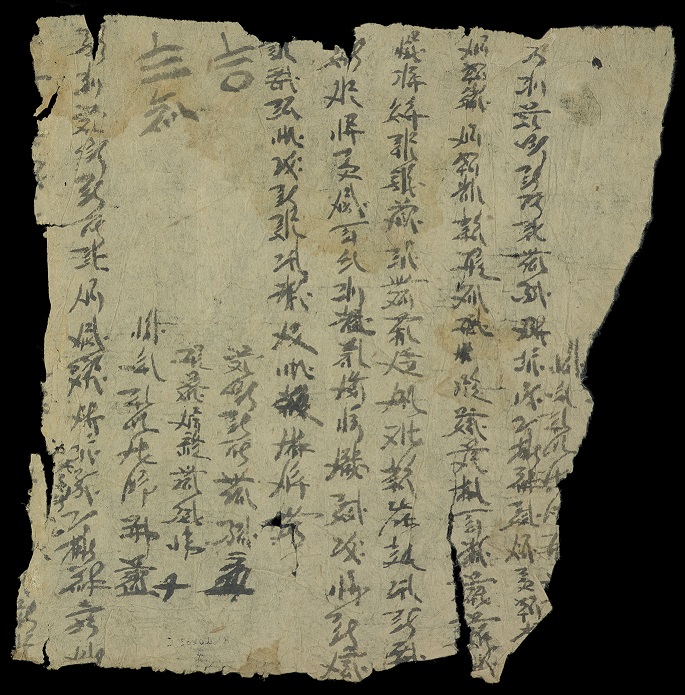
Huaya 花押 are a form of monogram which were developed in China during the Song dynasty (960–1279). During the Yuan dynasty (1271–1368), huaya were also commonly engraved on seals so that the huaya could be stamped onto documents as signatures or impressed on art work as ownership marks. Huaya were also commonly used by Tangut people within the Western Xia state (1038–1227). Many examples can be seen on manuscript contracts and court cases written in Tangut, where the persons involved (buyers, sellers, witnesses, litigants) would write their personal huaya underneath their name (the actual names being written by the scribe drawing up the document). Some huaya are very simple, little different to the 'X' once used by illiterate people in the West to sign their name, but most have fairly complex cursive designs; in a few cases specific Tangut characters can be seen within the design. This page shows some examples of Tangut huaya that I have found in Tangut documents, and will be updated as I come across more examples.
Contract for selling or lending grain. The two symbols 𝍪𝍤 are counting symbols representing '25' (i.e. 2½ dou), apparently corresponding to the words 𗍫𗰗𗏁 "twenty-five" in the text below. Cf. Or.12380/2529 which has a similar symbol for '15'.
Other side of a pre-printed grain contract with gaps filled in by hand, dated Tiansheng 20 [1168] (𘓺𘃸𗍫𗰗𗤒 with 𗍫𗰗 filled in by hand). See 史金波:《西夏对中国印刷史的重要贡献 》(《中国史研究》2020年第1期).
The huaya is written over a red seal which reads 𘑐𘅞𗥦[𘏿] 'Supervisor of measures', presumably indicating that the qualities of grain mentioned in the contract have been officially verified. This huaya is very similar to a Yuan dynasty huaya seal for someone with the family name Xǔ 許:
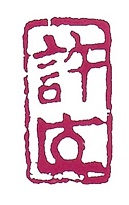
Contract for selling or lending grain, mentioning 𗝏𗏁𗚻 "[one] dou and five sheng" (i.e. 1½ dou) of grain. The symbol 𝍩𝍤 below the character 𗻧 'barley' on the top left is a counting symbol representing '15' (i.e. 1½ dou). Cf. Or.12380/2035(B) which has similar symbols for '25'.
The first, third, and fourth huaya look to be based on the Tangut characters 𗑗 'pure, lotus', 𗣋 'enemy', and 𘂆 'small' respectively. From right to left, the signatures to the contract are as listed below (⁕ = huaya):
The text is Chinese rather than Tangut, but includes the Tangut family name 嵬名.
The characters 𗍫𗰗𗢭 'twenty-nine' are written above the huaya
Huaya written inside the D manuscript of Joined Rimes of the Five Sounds 𗏁𗙏𘈖𗖵
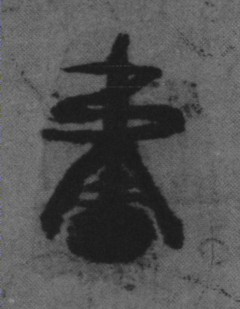
Contract for the sale of two household slaves for 50 bushels of mixed grain, dated 24th day of the 3rd month of Tiānqìng 6 [1199]. See 史金波: 黑水城出土西夏文卖人口契研究 in 中国社会科学院研究生院学报 2014.4: 121–129 for further details.

The two slaves sold in this contract are a person named 𗏁𗼑𗘂 [五月犬] 'May Dog' and an unnamed young person (they are specified as being 𗷆𘒏 'military personnel' so should both be males). The purchaser of the two slaves is stated in the contract as 𗥚𗳩𗍥𘟙𗯿 [移訛金剛盛], but there is no signature for him. From right to left, the signatures to the contract are as listed below (⁕ = huaya):
Contract for the sale of six household slaves for 450 strings of iron cash, dated 24th day of the 3rd month of Qiányòu 15 [1184]. See 史金波: 黑水城出土西夏文卖人口契研究 in 中国社会科学院研究生院学报 2014.4: 121–129 for further details.

The slaves sold in this contract are named as 𗵆𘎧 [成訛] (male, aged 60), 𗼨□𗘂 [嵬□犬] (male, aged 39), □□ [□□] (male, aged 28), 𗘂𗿦𗯿 [犬母盛] (female, aged 57), 𗘂𗿦𘏨 [犬婦寶] (female, aged 35), and 𘞵𗘂 [增犬] (female, aged 23). The purchaser of the six slaves is stated in the contract as 𗳩𘄄𗹙𘏨 [訛移法寶], but there is no signature for him. From right to left, the signatures to the contract are as listed below (⁕ = huaya):
Contract for the sale of four household slaves for 450 strings of cash, dated 3rd day of the 2nd month of Huángjiàn 1 [1210]. See 史金波: 黑水城出土西夏文卖人口契研究 in 中国社会科学院研究生院学报 2014.4: 121–129 for further details.

The slaves sold in this contract are named as 𗜓𗫉𗫉 [顯樂樂] (male), (𗯭)𗶩𗼅 [外地美] (female), 𗢭𗼑𗫉 [九月樂] (son of the above), and 𗩭𗼑𗵆 [正月成] (son of the above). The purchaser of the four slaves is stated in the contract as 𗳩𗂎𗍥𘟙𗰔 [訛七金剛酉], but there is no signature for him. From right to left, the signatures to the contract are as listed below (⁕ = huaya):
Two fragments of a manuscript document recording court cases from the Guazhou Department of Military Supervision (瓜州監軍司審判案)
The Tangut characters 𗸐𗍶 'diligently carved' are written above both occurences of the two huaya.
Fragment of a manuscript document recording court cases from the Guazhou Department of Military Supervision (瓜州監軍司審判案)
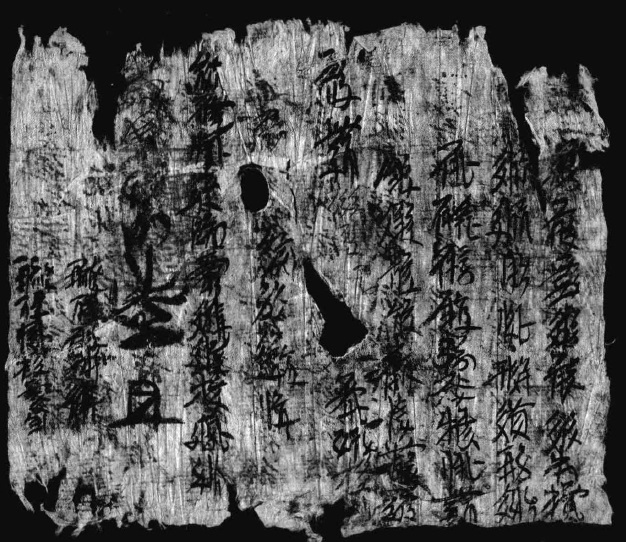
Verso of a fragment from vol. 104 of a manuscript copy of the 𘜶𘄒𘎑𘏞𗓽𗕥𗸰𗖰𗚩 (Great Perfection of Wisdom Sutra)
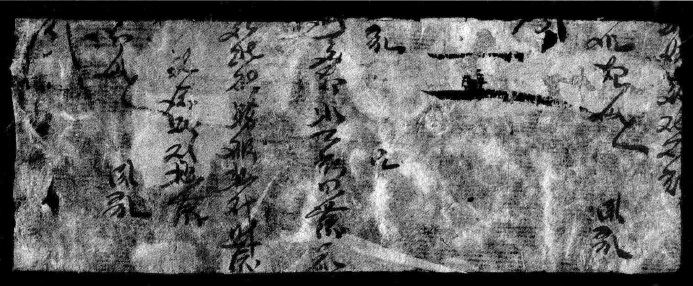
Last page of vol. 355 of a manuscript copy of the 𘜶𘄒𘎑𘏞𗓽𗕥𗸰𗖰𗚩 (Great Perfection of Wisdom Sutra)
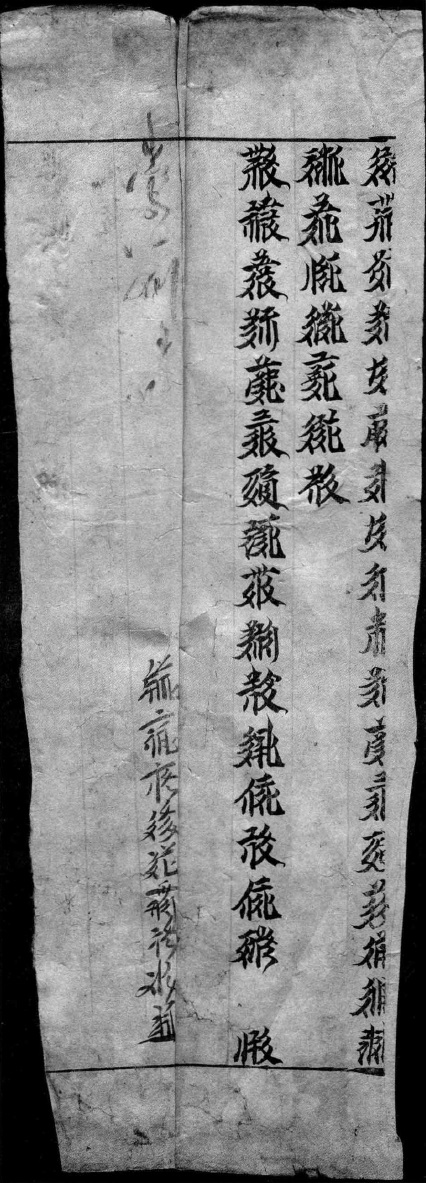
The final column of text gives the name of the patron (𘓞𗄈𗇋) who paid for the copying of the sutra, 𗥚𗳩𗵆𗰔𘏨 [移訛成酉寶], followed by their huaya
Last page of the first volume of a woodblock edition of the 𗵒𘉍𗭼𗩾𗠁𘟙𗖰𗚩 (Golden Light Sutra)
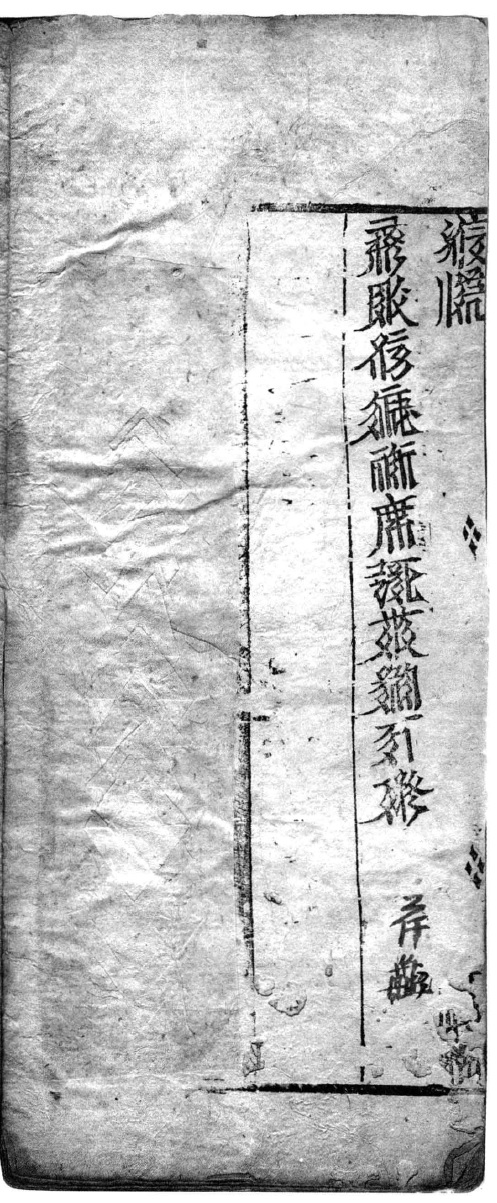
The Tangut family name 𘇜 with a huaya below
Last page of the fifth volume of a woodblock edition of the 𗵒𘉍𗭼𗩾𗠁𘟙𗖰𗚩 (Golden Light Sutra)
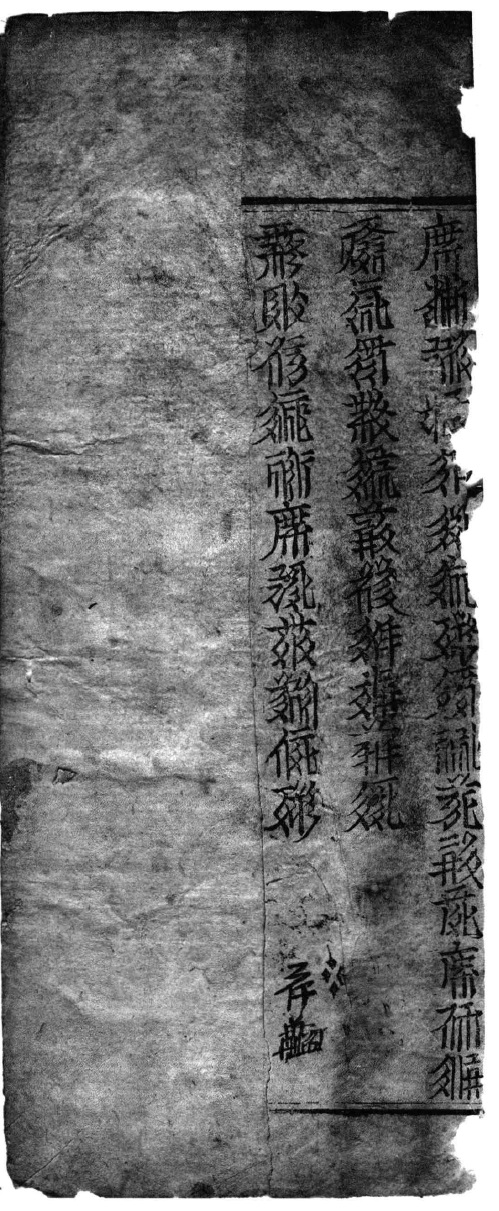
The Tangut family name 𘇜 with a huaya below
Fragment of a manuscript document recording court cases from the Guazhou Department of Military Supervision (瓜州監軍司審判案)
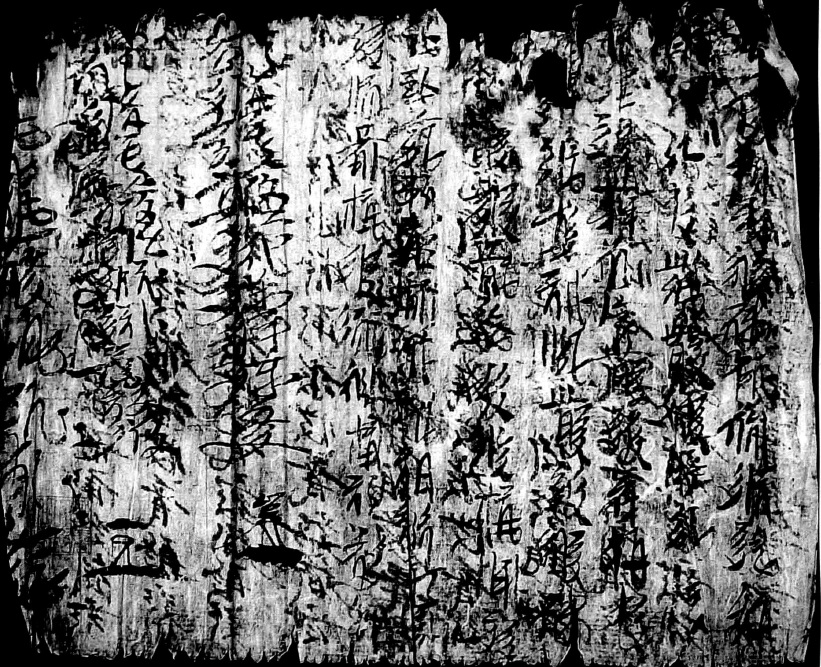
Fragment of a manuscript document recording court cases from the Guazhou Department of Military Supervision (瓜州監軍司審判案)
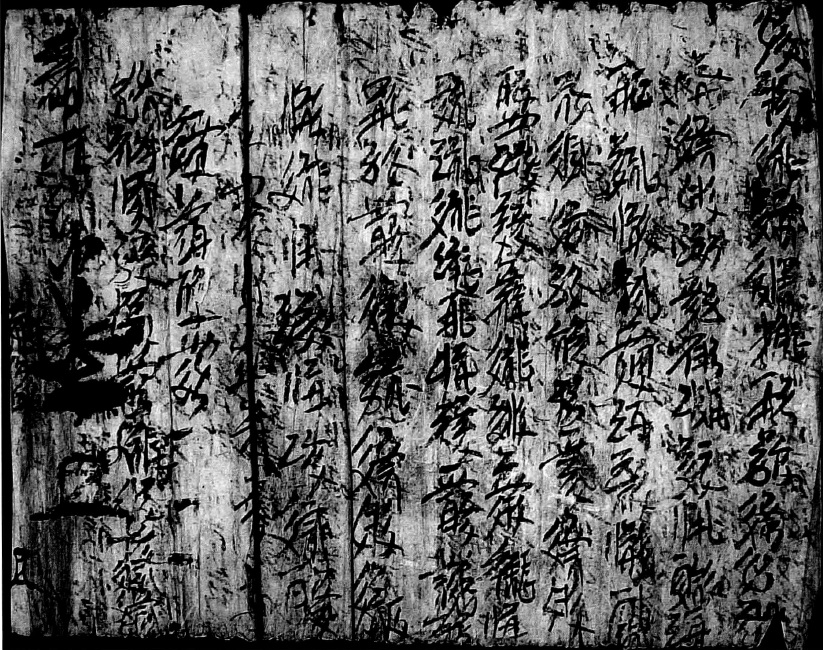
Fragment of a manuscript document recording court cases from the Guazhou Department of Military Supervision (瓜州監軍司審判案)

Contract to sell an old sick black ox for 65 strings of cash, dated 9th month of Qiándìng 3 [1225]
The purchaser of the ox is stated in the contract as 𘛀𗘂𘄒𘎑𘟪 [命屈般若鐵], but there is no signature for him. From right to left, the signatures to the contract are as listed below (⁕ = huaya):
Contract to lend a bushel of millet, dated 25th day of the 2nd month of Qiándìng 2 [1224]
From right to left, the signatures to the contract are as listed below (⁕ = huaya):
Contract dated Qiándìng 3 [1225]
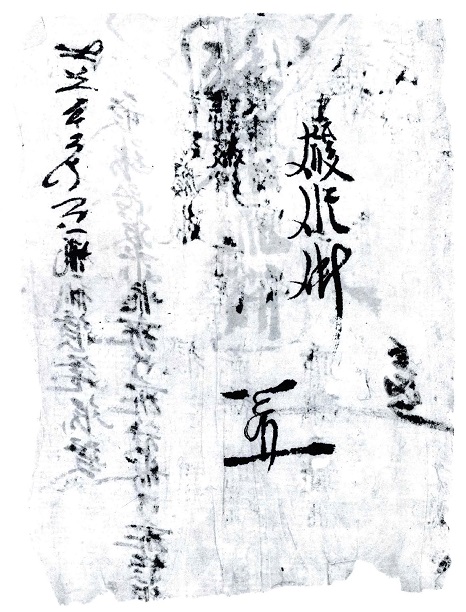
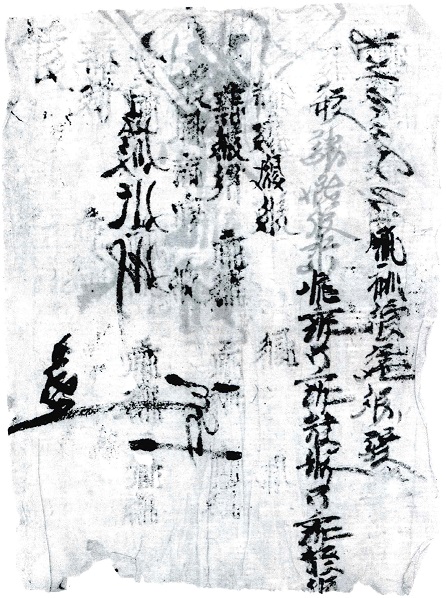
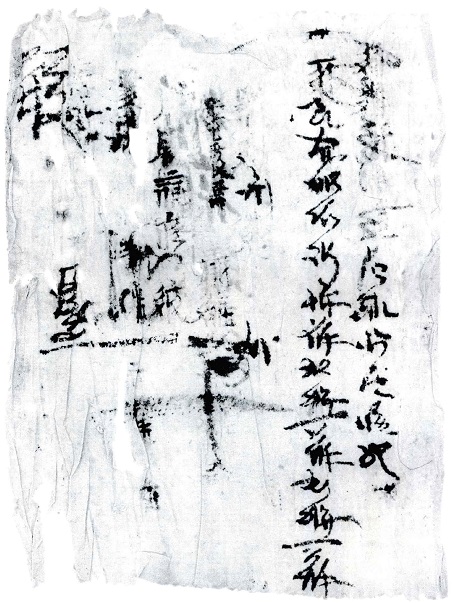
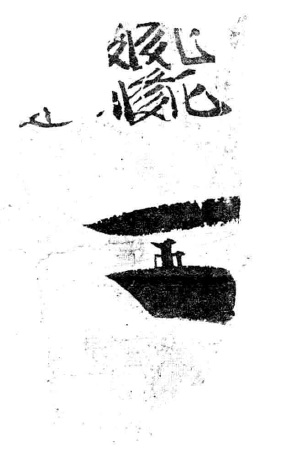
The Tangut family name 𗼨𗆟 [嵬名], with a huaya beneath
Examples of Tangut 'tamga' from А. П. Терентьев-Катанский (A. P. Terentiev-Katansky (1934–1998), Книжное дело в государстве тангутов (по материалам коллекции П. К. Козлова) (Moscow: Nauka, 1981) page 67

Last modified: 2023-06-17.